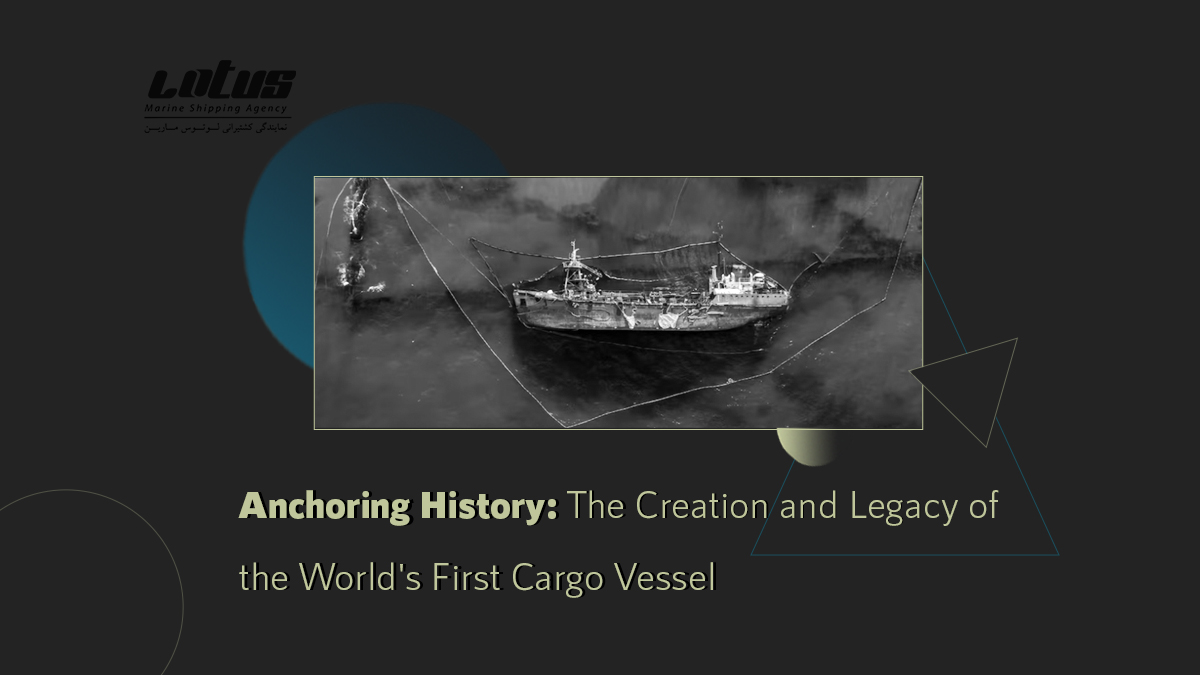In the annals of maritime history, the evolution of cargo vessels stands as a testament to human innovation and the unceasing quest for progress. The world’s first cargo vessel marked a pivotal moment in this evolution, transforming the way goods were transported across oceans and reshaping the course of global trade. In this article, we’ll embark on a journey through time to explore the inception and enduring legacy of the world’s inaugural cargo vessel.
Setting Sail into the Past
The Genesis of Cargo Transportation
The concept of cargo transportation by sea can be traced back to ancient civilizations such as the Egyptians and Phoenicians. However, it was during the Age of Exploration in the 15th century that significant advancements were made in maritime technology, paving the way for the world’s first cargo vessel.
The Birth of a Maritime Pioneer
In the late 15th century, as explorers like Christopher Columbus and Vasco da Gama ventured into uncharted waters, the need for efficient cargo transportation became paramount. It was during this era that the first cargo vessel, christened the “TradeWinds,” took shape.
The TradeWinds: A Game Changer
Navigating the Design
The TradeWinds was a marvel of engineering, boasting a streamlined design optimized for cargo storage. Its hull was reinforced to withstand the rigors of long sea voyages, and its innovative cargo compartments allowed for efficient loading and unloading of goods.
Maiden Voyage
In 1492, the TradeWinds embarked on its maiden voyage from Seville, Spain, laden with precious cargo, including spices, textiles, and exotic goods from the New World. This historic voyage marked the beginning of a new era in global trade.
Impact on Global Trade
The TradeWinds’ success revolutionized global commerce. It drastically reduced the time and cost of transporting goods across the Atlantic, leading to a surge in trade between the Old World and the New World.
The Enduring Legacy
Pioneering Innovations
The TradeWinds’ design innovations, such as its efficient cargo compartments and reinforced hull, became standard features in subsequent cargo vessels, influencing centuries of maritime engineering.
Shaping Modern Trade
The legacy of the world’s first cargo vessel is felt even today. It laid the foundation for the sprawling global shipping industry, connecting continents, nations, and people through the exchange of goods.
Preservation Efforts
Efforts to preserve the historical significance of the TradeWinds continue today. Museums, maritime enthusiasts, and historians work diligently to restore and showcase this iconic vessel to future generations.
Conclusion
The story of the world’s first cargo vessel, the TradeWinds, is a testament to human ingenuity and the transformative power of innovation. This pioneering vessel not only revolutionized the way goods were transported but also shaped the course of global trade for centuries to come.
Frequently Asked Questions (FAQs)
- What was the cargo capacity of the TradeWinds?
- The TradeWinds had a cargo capacity of approximately 150 tons.
- How long did the maiden voyage of the TradeWinds take?
- The maiden voyage of the TradeWinds from Seville to the New World took approximately two months.
- Are there any surviving artifacts from the TradeWinds?
- While the original vessel no longer exists, some artifacts and historical records related to the TradeWinds have been preserved in museums and archives.
- Did the TradeWinds face any notable challenges during its voyages?
- Yes, the TradeWinds encountered various challenges, including storms, navigation difficulties, and encounters with indigenous populations in the New World.
- How did the success of the TradeWinds impact Spain’s economy?
- The success of the TradeWinds contributed significantly to Spain’s economic prosperity during the Age of Exploration, as it facilitated the trade of valuable goods from the New World.
In conclusion, the world’s first cargo vessel, the TradeWinds, remains a symbol of human achievement and innovation, forever anchored in history as a trailblazer in global trade and maritime transportation

